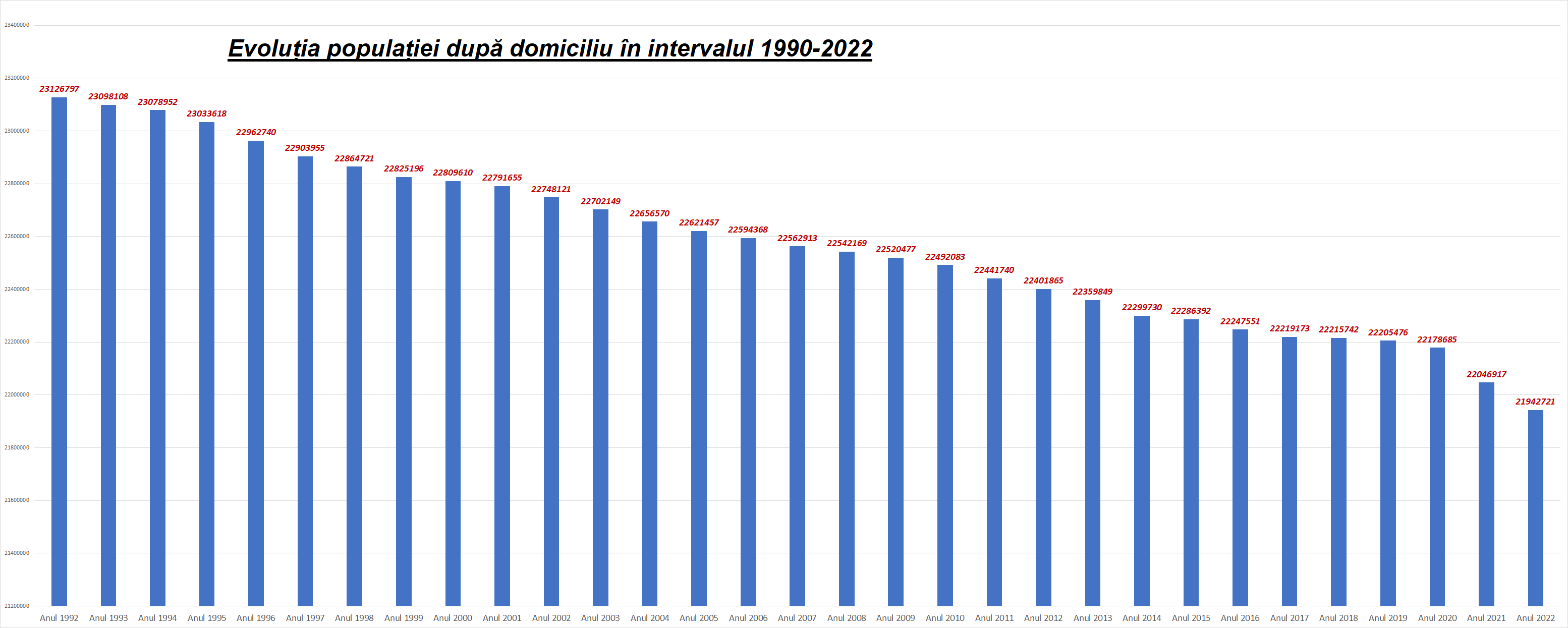
Between July 2021 and July 2022, Romania lost more than 100,000 inhabitants (the equivalent of cities like Satu Mare or Botosani), according to data released Friday by the National Institute of Statistics, including the population by place of residence.
From more than 22 million inhabitants of Romania, we are down to 21.9 million.
- The urban and female population predominate (56.2% and 51.2%, respectively).
- The phenomenon of demographic aging intensified, the elderly population aged 65 and older exceeded the youth aged 0-14 by 672 thousand people
Population by place of residence represents the number of persons with Romanian citizenship and place of residence on the territory of Romania, delimited according to administrative and territorial criteria. In other words, the resident population represents the de jure population, which may also include emigrants; do not confuse the population by place of residence with the permanent population
According to INS calculationsIn 2060, Romania could have 16.3 million inhabitants (the optimistic version), and only 12.5 million inhabitants in the pessimistic one.

The number of urban permanent population was 12.3 million people, compared to July 1, 2021.
The female population on July 1, 2022 was 11,234 thousand people, which is more than 51 thousand people less than on the corresponding date last year.
The process of demographic aging intensified compared to July 1, 2021 due to an increase in the share of the elderly population and a slight decrease in the share of youth (0-14 years old).
The demographic aging index increased from 119.3 (as of July 1, 2021) to 121.1 elderly persons per 100 young persons (as of July 1, 2022).
The average age of the population was 42.1 years, which is 0.1 year more than on July 1, 2021. The average age was 42.6 years and increased by 0.2 years compared to July 1, 2021.
In the total population as of 01.07.2022, the largest share was the age group 50-54 years (9.0%). Among men, the share of this age group was 9.2%, among women – 8.8%.
The share of the 0-4 year old group was 4.6%, less than that of the 5-9 year old group (4.8%) and the 10-14 year old group (5.1%).
Source: Hot News RO
Robert is an experienced journalist who has been covering the automobile industry for over a decade. He has a deep understanding of the latest technologies and trends in the industry and is known for his thorough and in-depth reporting.